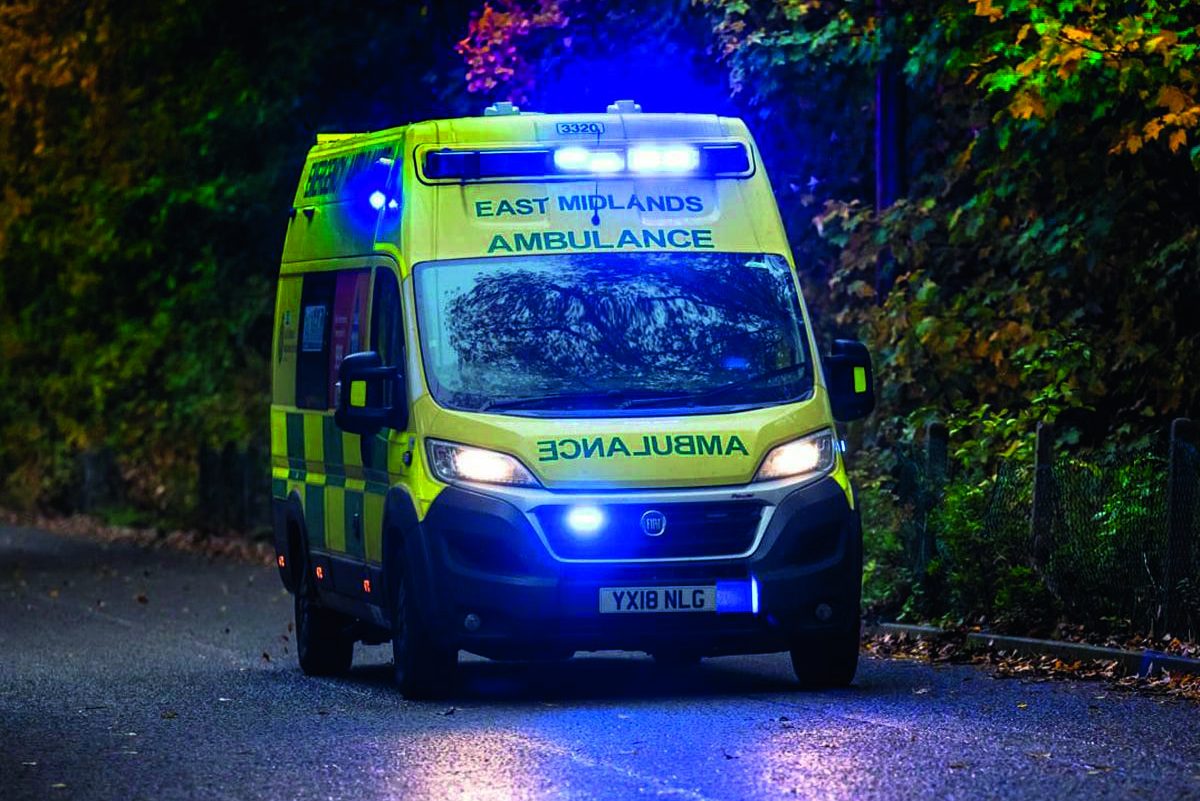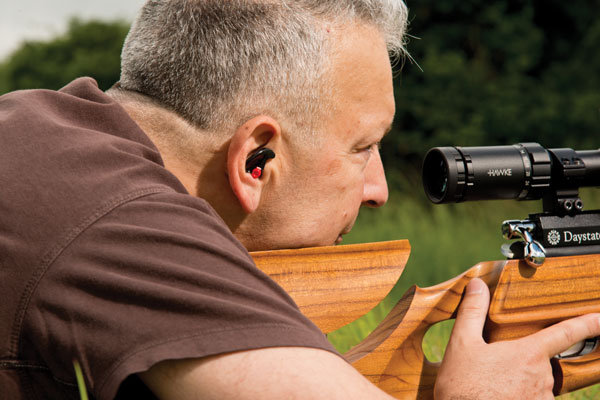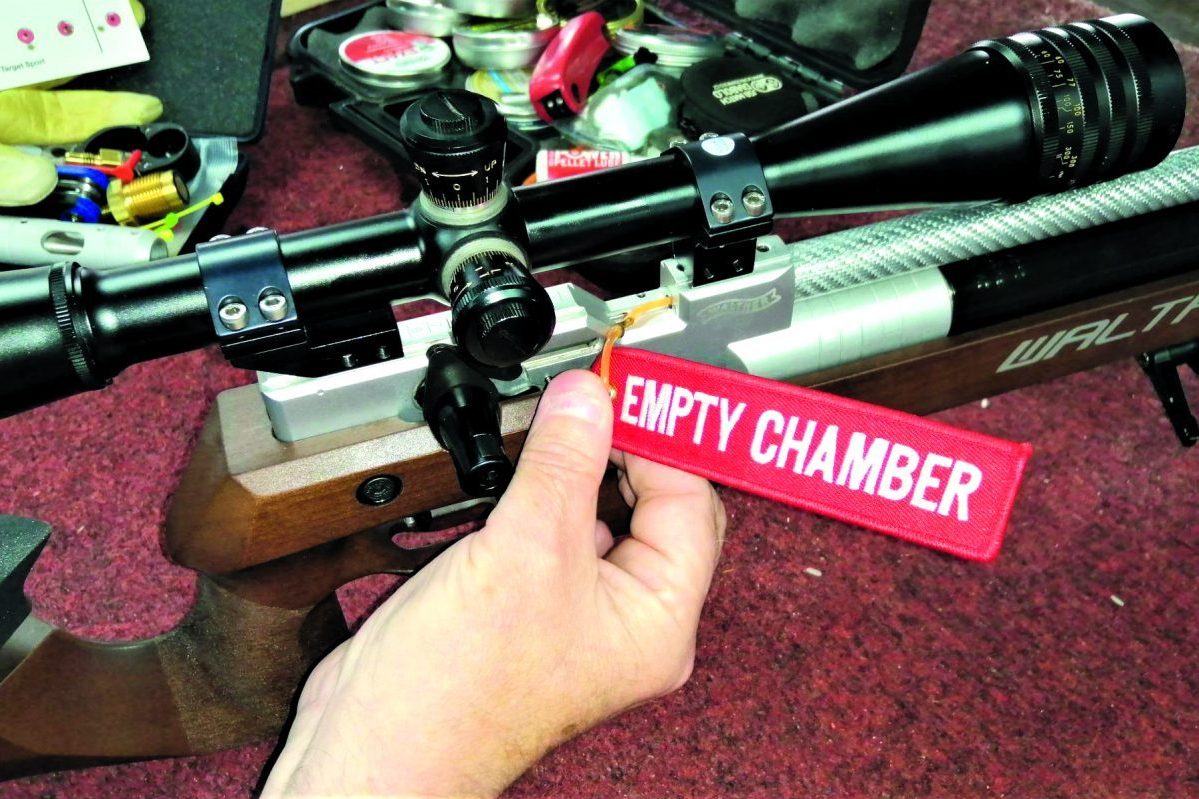What should you do if a fellow Shot has a heart attack?
Do you have the skills to help a fellow Shot suffering a heart attack or cardiac arrest? Don’t be the helpless bystander, says James Simon

Long wait times for ambulances mean that CPR knowledge is vital
The prospect of having a heart attack is so unpleasant that many of us prefer to ignore it, to treat it as something that happens to other people someplace else, not us. In any case, help is just a 999 call away, right? Well, read on. That ambulance? It’s not coming – not in time, anyway. As I write this piece at the tail end of 2022, it’s been revealed that suspected heart attack victims are, on average, waiting for more than an hour for an ambulance to show up.
If you’re lucky enough to live in the beautiful county of Cornwall, your good fortune will be sorely tested by a wait of up to two hours. The situation is similarly dire in parts of Gloucestershire, Lincolnshire, Somerset and Bristol.
Of course, one of the reasons so many of us love shooting is to get away from it all, to enjoy time far from the madding crowd. Far from help, too. Even if you’re a clay Shot, you’ll likely be shooting on relatively remote ground due to noise considerations. So, you’ll have to judge those appalling wait times as being conservative. (Click here for more on safety when you’re out shooting).
Statistics
Of course, it’s not healthy to obsess about unfortunate experiences that may never happen, and we’re not advocating that readers should start avoiding their favourite pastimes such as shooting.
It is, however, sensible to be realistic about the possibility of you or one of your fellow Shots suffering a heart attack or cardiac arrest. According to the British Heart Foundation (BHF), 100,000 UK hospital admissions every year are due to heart attacks. That’s 260 admissions a day, or around one every five minutes.
Sadly, the statistics for cardiac arrests are even more chilling. There are fewer incidents, about 30,000 out-of-hospital cardiac arrests every year, but the survival rate for a cardiac arrest is currently just one in 10.
What makes us susceptible to heart issues of this kind? You’ve heard it all many times before: smoking, poor diet, diabetes, lack of exercise, high blood pressure, high cholesterol and ageing. Genetics can play a part too.
Unlike many other sports, most forms of shooting don’t require Shots to have a good level of physical fitness, they don’t provide even a moderate workout and participants tend to be middle-aged or older. Fact is, us shooters are as susceptible as anyone else, perhaps even more so.

If you’re shooting remotely, it’s a good idea to take precautions
Heart attack or cardiac arrest?
The phrases “heart attack” and “cardiac arrest” are often used interchangeably, but their true definitions are very different. To discover their precise meanings, we first need to talk about coronary heart disease.
Coronary heart disease (aka ischaemic heart disease) is a circulatory condition caused by the build-up of fatty material, called atheroma, in the walls of the coronary arteries. As the deposits build up, the lining of the arteries becomes clogged and damaged, restricting the flow of oxygen-rich blood to the heart. The result can be a painful condition called angina, or if the arteries become very restricted, a heart attack.
Coronary heart disease can’t be cured, but it can be halted by lifestyle changes, such as giving up smoking, eating a healthy diet and taking regular exercise.
Heart attacks are often the tragic consequence of coronary heart disease. If the plaque in an artery bursts, then a blood clot can form at the site of the rupture, drastically impeding or even blocking the supply of blood to the heart. The resulting lack of oxygen severely damages areas of the heart muscle.
There are many different types of heart attack, but the symptoms are broadly the same. Here’s how the NHS describes them:
- Chest pain – a feeling of pressure, heaviness, tightness or squeezing across your chest
- Pain in other parts of the body – it can feel as if the pain is spreading from your chest to your arms (usually the left arm, but it can affect both arms), jaw, neck, back and tummy
- Feeling light-headed or dizzy
- Sweating
- Shortness of breath
- Feeling sick (nausea) or being sick (vomiting)
- An overwhelming feeling of anxiety (similar to a panic attack)
- Coughing or wheezing
It’s worth noting that some people only suffer minor chest pain. Somewhat confusingly, a cardiac arrest is the classic representation of a ‘heart attack’ that we see in the movies, but it is distinctly different and requires a specific response. It’s a complication that causes a ventricular arrhythmia (irregular beat) which stops the heart from pumping.
The NHS describes the symptoms as:
- The patient appears not to be breathing
- They’re not moving
- They don’t respond to any stimulation, such as being touched or spoken to
Cardiac arrests are often caused by damage or impairment to the heart. It’s not unusual for somebody who has suffered a heart attack to go into cardiac arrest.
Response
If you see a fellow Shot suffering a heart attack or cardiac arrest, you must act quickly.
“If you, or somebody with you, suffers a heart attack, it’s vitally important to get them medical attention immediately by calling 999 for an ambulance,” says Estelle Stephenson, survival programme lead at BHF. “The heart is still pumping blood around the body during a heart attack, so the person will still be conscious and breathing, and they may have classic symptoms such as chest pain, breathlessness and feeling sick. However, a cardiac arrest may follow, so don’t delay.”
St John Ambulance (SJA) suggests moving the victim into a comfortable position to ease strain on the heart. It recommends sitting them on the floor with their head and shoulders supported and their knees bent. If available, cushions can be placed behind them and under the knees. It also recommends giving them 300mg of aspirin to chew slowly, provided they are over 16 and not allergic to the drug.
“A cardiac arrest is the ultimate medical emergency,” says Estelle. “If you see someone having a cardiac arrest, you should also call 999 immediately, so that the operator can send an ambulance and support you with delivering CPR. If there is someone else with you who can fetch a defibrillator, you will be advised on the location of the closest one. Don’t interrupt CPR to find a defibrillator if you’re on your own, because every minute without CPR reduces chances of survival by 10%.
“Immediate CPR and defibrillation can more than double the chances of survival in some cases – yet over a third of adults have never undertaken any form of CPR training.”
Delivering CPR

CPR can keep a patient from suffering additional complications
If you don’t know how to deliver cardiopulmonary resuscitation (CPR) then we urge you to book yourself onto a training course as soon as possible – you’ll find links to SJA’s and the BHF’s recommendations at the end of this piece. In the meantime, here’s what Estelle suggests if you find someone unconscious and not breathing or breathing abnormally.
- Kneel next to the person.
- Check for a response and then call for help.
- Place the heel of one hand in the centre of their chest, then place your other hand on top of the first. Interlock your fingers.
- With straight arms, use the heel of your hand to push the breastbone down firmly and smoothly, so that the chest is pressed down between 5–6cm, and release.
- Do this at a rate of 100 to 120 chest compressions per minute – that’s around two per second. We tell people to think of the song Stayin’ Alive by the Bee Gees and push to the beat.
CPR is unlikely to return a heart to normal rhythm, but it will help to keep blood flowing to the brain and other vital organs. Delivering CPR at an effective rate is truly exhausting, so work in pairs if you can, and keep going for as long as possible.
Countryside Defibrillator Initiative
Ross Severn, director, Defib Plus, has an enthusiasm for supplying defibrillators surpassed only by his passion for shooting.
Recognising that Shots and other outdoor enthusiasts are poorly served by the current network of rurally located defibrillators, he’s now spearheading the Countryside Defibrillator Initiative.
“Investing in a defibrillator can, quite literally, buy you the time to save a life,” says Ross. “They’re relatively inexpensive to purchase and simple to use, but there just aren’t enough of them out there. If you consider the remote locations where much of our shooting takes place, together with the current ambulance response times, then your best chance of surviving a cardiac arrest has to be with a defibrillator.”
The Countryside Defibrillator Initiative aims to provide access to more defibrillators by working with membership organisations such as the CPSA. If your shooting club or rural workplace doesn’t have a defibrillator in place, then now is an excellent time to invest in one.
“Defibrillators qualify for the 130% capital allowance ‘super-deduction’ brought in by the current Government to help ease the financial pain of the Covid pandemic,” says Ross. “But you’ll have to act soon, because it ends in March 2023. In addition, we’ve just agreed to provide a generous discount for CPSA members.”

Having access to a defibrillator can mean life or death
Richard Worthington, national development manager, CPSA, has witnessed first-hand the difference that a defibrillator can make. “I have been at a shoot where a Shot suffered a cardiac arrest,” says Richard. “Fortunately, due to the quick actions of fellow Shots and the ground’s team, a defibrillator was deployed and the chap survived what could easily have been a ghastly tragedy.
“We already insist that our affiliated clubs and grounds have a qualified first-aider, and ask to see their certificate as part of the supporting documents required with any affiliation application. Due to the inaccessible locations of some shoots, we also insist that the grounds display an emergency response procedure, which provides longitude/latitude info so that a helicopter can be called in if necessary.
“Recommending that clubs and grounds are also equipped with a defibrillator goes a step further to safeguard the well-being of Shots enjoying the sport of clay shooting. To that end, we’ve negotiated a 10% discount with the Countryside Defibrillator Initiative and Defib Plus ,” concludes Richard.
What sort of money is a defibrillator? Are they affordable for most clubs, estates, farms and small syndicates? Absolutely, and they’re no more costly than a posh laptop.
“The model I’d recommend costs about £1,000 plus VAT,” says Ross, “and is small and robust enough to be carried on the back of a quad. I also recommend our support contracts, which are optional but ensure that your defibrillator is working so that you can demonstrate duty of care and best practice. They cost from £34.99 a month upwards, and include monthly inspections. All costs are tax-deductible, and if you split them across a syndicate, they become very reasonable.”
How much value do you place on a life?
Using a defibrillator

Despite looking
complex, they are
easy to use
Using a defibrillator is your best chance of getting a heart in cardiac arrest to return to a normal rhythm. Sometimes called a defib, AED or PAD, it’s an essential piece of kit that delivers a high-energy shock to the heart.
They’re extremely easy to use and won’t deliver a shock unless it’s needed, so there’s no chance of harming the patient. Most will talk you through the simple task of applying a couple of pads and automatically shocking the patient.
The only issue with defibrillators is that there just aren’t enough of them readily available, but with the help of the shooting community, that may be about to change.








